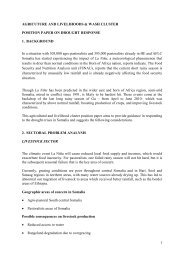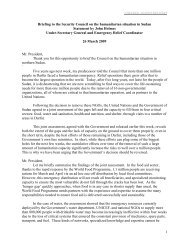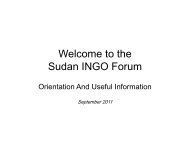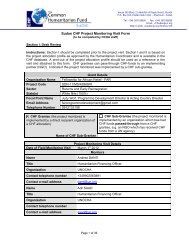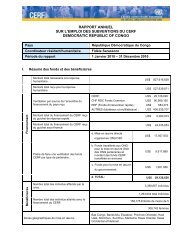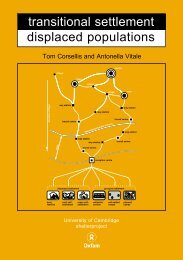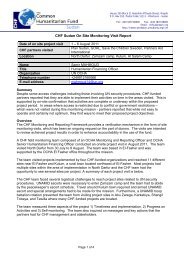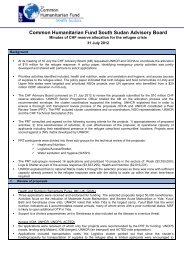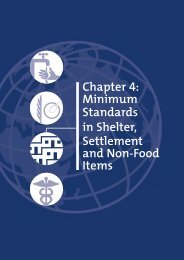Ethiopia - OCHANet
Ethiopia - OCHANet
Ethiopia - OCHANet
Create successful ePaper yourself
Turn your PDF publications into a flip-book with our unique Google optimized e-Paper software.
3.2.5 Resource mobilisation<br />
112. Almost one third of $822 million raised in 2011<br />
(the second largest total in the last decade) 42 came<br />
in March. This compares to resources raised predominantly<br />
in July and August for Somalia and Kenya.<br />
113. This was an undoubted success for the system<br />
and only tells part of the story since PSNP (for example)<br />
does not feature in the humanitarian envelope<br />
and food aid requirements are calculated months<br />
in advance of delivery.<br />
114. In responses to this evaluation there was<br />
a strong consensus that donors had been both<br />
fast and innovative in their response to the <strong>Ethiopia</strong><br />
emergency in 2011. USAID, the largest donor, has<br />
supported some two thirds of the food needs<br />
in recent years, by far the largest humanitarian<br />
resource input.<br />
Fig 12: humanitarian funding to <strong>Ethiopia</strong><br />
115. This, and USAID’s careful planning, is hugely<br />
significant since they do not need to wait for<br />
an ‘official’ signal to respond, but can anticipate<br />
and to some degree pre-empt need. This was<br />
also the case with the second largest donor, UK<br />
Department for International Development (DFID),<br />
who contributed to the Humanitarian Response<br />
Fund (HRF) in January and are a major supporter<br />
of the PSNP.<br />
116. While initial funding might have been early in approval, it is also the case the major tranches<br />
were released only with the revised HRD in July 2011 together with international media interest in the<br />
famine and Somalia and the refugees from that crisis. Some donors found it difficult to commit large<br />
amounts of funding in the absence of an appeal. DFID made a major contribution to WFP in July,<br />
allowing them to use their forward purchase facility and arguably safeguard the food aid pipeline.<br />
117. Inevitably some sectors were better funded than others. Food was well funded, as was nutrition<br />
and water. Other sectors, such as help for livestock and livelihoods, were not as well funded<br />
despite these being people’s number one concern in interviews for this evaluation, especially<br />
in pastoral areas. This leads to the perennial discussion around value for money and the efficacy<br />
of early intervention. Whilst evidence is notoriously difficult to secure for comparing methods<br />
of intervention, it is interesting to note the cost of the PSNP against the cost of the emergency<br />
operation in 2011 (US $270m for 7.2m people vs US $822m for 5m people).<br />
42 Only 2008 had been larger, at US $1.2bn, and this was before the PSNP had gone to scale.<br />
36




